Aussie car fans and nostalgia buffs will tell you that local motoring reached its peak in the 1970s. They rave about the Falcon GTHO Phase 3, the Torana XU1, Valiant Charger E49 and even the Leyland P76. What rubbish.
The Fords and Holdens of today are the best cars we’ve ever driven, or produced, and even the humble Toyota Camry is way better for everyday driving than any sort of Bathurst blitzing GTHO.
The Australian motor industry might be in its death throes, with Holden and Ford scheduled to shut their factories inside three years and Toyota also closing on a local retreat, but there is still plenty to celebrate.
I realise now that I have lived through the glory days of Australian motoring and have been privileged to drive, assess and report on everything from the original VB Commodore in 1978 through to the latest super-good HSV GTS.
And what about the Volkswagen Beetle and Volvo 240 that were assembled in Australia? What about the Nissan Pintara Superhatch? Actually, I’m only joking with those three, because none of them qualifies as a Top Aussie. But there is a group of cars that were truly great in their day, even though a lot of people have probably never heard of them.
My personal number one is the Mini Moke. It might have begun its life in Britain, but it is unique and has the qualities - including the larrikin touch - that we celebrate each year on Australia Day. So here it is, alongside the other nine that I think we should be honouring.
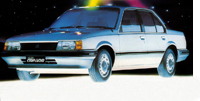 1. Holden JB Camira - 1982
1. Holden JB Camira - 1982
The original Camira was so far ahead of the curve that most people only have bad memories. Yes, the quality was … questionable, and the original 1.6-litre engine was asthmatic. But it was a compact-sized car built in Australia, it was plugged into a global program with General Motors - called the J-Car - and the basic ideas and layout were good. It also drove very well. But by the time the bugs were sorted its time was past.
 2. Nissan Skyline R31 GTS 2 - 1989
2. Nissan Skyline R31 GTS 2 - 1989
No, not Godzilla. There was a time when the GT-R road rocket landed here and was tweaked by a Special Vehicles division at Nissan Australia, but this car was a rear-drive fun bus developed from the locally-made Skyline. There were actually two models, one in white and the other in red, and it’s the second car that really scores. It was a truly good drive, thanks to work by a team that included Mark Skaife and Nissan stalwart Paul Beranger.
 3. Toyota TRD HiLux - 2008
3. Toyota TRD HiLux - 2008
When Toyota Australia decided it needed a hotrod division there were lots of doubters, and they eventually killed it before it got a chance to fire. The supercharged TRD - some people have suggested a vowel was missing from the name - version of the Aurion was only ok, but the also-blown HiLux was ripe for improvement and the work was good. As utes continue to boom in Australia, a TRD HiLux with local suspension and body improvements would probably star in 2014.
 4. Ford Territory Diesel - 2011
4. Ford Territory Diesel - 2011
Without the Territory, the Ford Falcon would already be dead. It’s a decade since the all-Australian SUV was given the green light and it’s still one of the best large seven-seaters for the money. The Territory program was driven by the late-and-great Geoff Polites, who also wanted a diesel engine from the start to hook tow owners. It came far, far too late but is still a winner and far more popular than the petrol turbo choice.
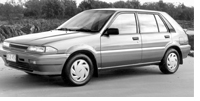 5. Nissan N13 Pulsar/Holden LD Astra - 1987
5. Nissan N13 Pulsar/Holden LD Astra - 1987
Born at the height of the badge engineering era - there was a time when the Nissan Patrol became a Ford and the Falcon ute became a Nissan - the N13 was a tough, sensible and quality compact car. It got the basics from Japan but local tweaking made it a truly classy little car that Holden also grabbed before it turned to Toyota, Opel and Daewoo for its showroom babies.
 6. Elfin MS8 Streamliner - 2004
6. Elfin MS8 Streamliner - 2004
I can still clearly remember the day when Holden styling guru Mike Simcoe showed me a picture of his retro-inspired design for the Elfin Clubman. I was stunned. The Streamliner shared the Clubman chassis, and the HSV V8 in the nose, but was wrapped in a radical, forward-looking body. It was never fully sorted as a road car and the business never got into gear, but it’s still a personal favourite and I have a Biante model of the Streamliner on my desk. 7. Holden V2 Monaro - 2001
7. Holden V2 Monaro - 2001
No, not the sixties Bathurst car. The car that started life as another of Simcoe’s dream machines in the late 1990s became a reality in the days when Holden could do nothing wrong. It looked good, it drove well, and it was impressive enough to win an export ticket to the USA. My favourite is the V2 model which was only bested by the BMW M5, at more than twice the price, over my personal road test loop in the Queensland hinterland.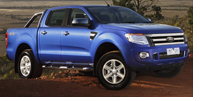 8. Ford Ranger - 2013
8. Ford Ranger - 2013
How can Australia’s car industry die when it’s capable of cars as good as the new Ranger, which is also sold as the Mazda BT50? It’s because the engineering is brilliant but it’s cheaper to make the Ranger in Thailand and bring to Australia under a free trade agreement. The Ranger is the first ute that drives mostly like a car, has five-star safety and can do work-and-play action at the head of its class.
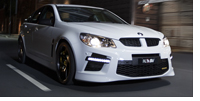 9. HSV GTS - 2013
9. HSV GTS - 2013
The ultimate proof that current cars trump anything in the history books. It’s not cheap, but it’s fast and furious when you want and luxuriously composed when you don’t. It’s got the hall-of-fame combination of a monster V8 with rear-wheel drive, but benefits massively from the update work - especially electronics - in the VF Commodore. It’s easily the most complete Holden of all time and would be my Bucket List choice for an all-Australian collector car – but it’s still not getting the recognition it deserves.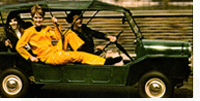 10: Leyland Moke - from 1966
10: Leyland Moke - from 1966
The original idea for the Moke might have come in a pitch to the British military forces, but the Moke struck a chord in Australia in the swinging sixties. It was just right for the Age of Aquarius, with no rules and plenty of fun. It was crazily unsafe - my friend Jim once got spat out of his on a corner - but got some worthwhile driving improvements over the Mini basics. Many survive today as rentals in Queensland’s sunshine belt and are a huge hit with foreign tourists.
This reporter is on Twitter: @paulwardgover




-2.jpg)


.jpg)

.jpg)
.jpg)






















.jpg)
.jpg)

.jpg)
.jpg)


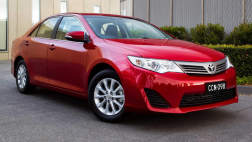
.jpg)




.jpg)


Comments